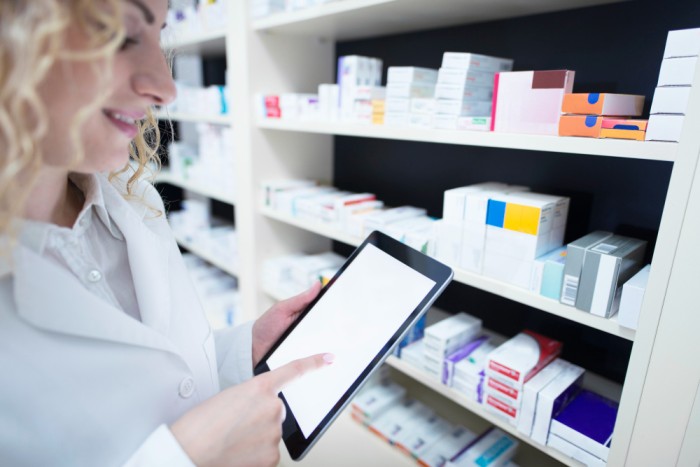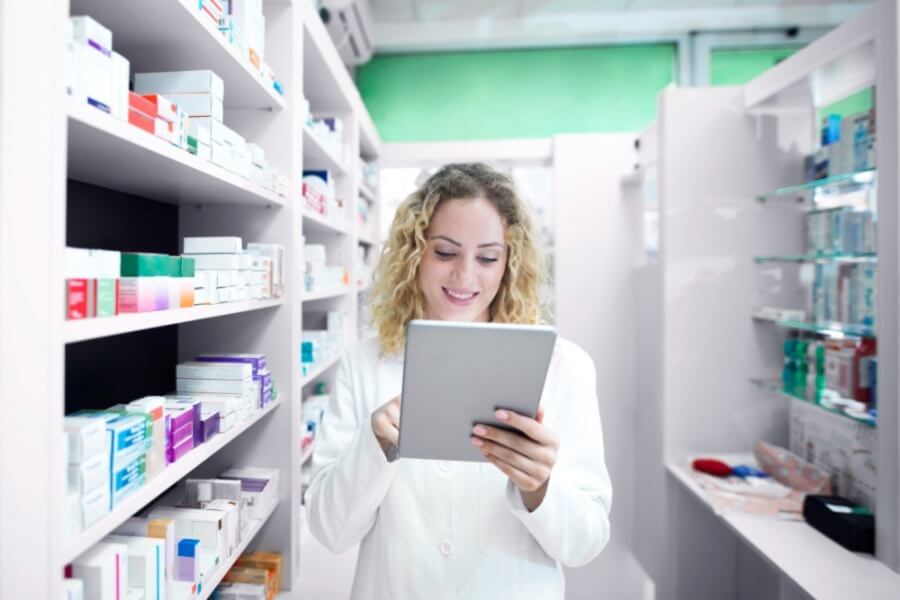The Rise of E-pharmacy
E-pharmacy is one of the branches of pharmacy that has gained significant popularity. The process of doing business with an e-pharmacy is effective, simple, and convenient. In this article, we will discuss the E-pharmacy trends in the healthcare sector. Indian e-Pharmacies, which emerged around 2015, have disrupted the market and gained traction rapidly. There are close to 50+ e-Pharmacies in India, and the market is expected to grow at a compounded rate of 44 percent to reach $ 4.5B by 2025. Shopping online for drugs is a common practice across the globe these days. This is because buyers prefer to order medicines through a click of a button with discounted drugs rather than taking a trip to a drugstore. Such online websites sell everything from e-prescription drugs to health-related products.
How are e-Pharmacies disrupting pharma retail?
Traditional pharma retail in India is highly unorganized and fragmented with close to 8.5 lakh unorganized retailers contributing more than 90 percent of sales. The unorganized nature of the space tends to a host of issues – frequent stockouts, the sale of spurious and substandard drugs, and limited access. E-Pharmacies look to disrupt the market while addressing these issues -
- Ensuring safer drugs – e - Pharmacies ensure a genuine drug supply, sourcing it directly from manufacturers and licensed resellers.
-
Improving access - the medical needs of rural India are underserved due to limited access to pharmacies. e-pharmacies have an edge in serving the unmet medical needs of a vast population.
-
Making drugs affordable - e-pharmacies save costs with better purchasing margins, efficient supply chains, and inventory management leading to reduced prices for the end consumer.
-
Ensuring drug availability - e-pharmacies can better manage their supply chain – ensuring high fill rates of 95 percent and avoiding stockouts common in traditional offline pharmacies.

Most such stores are legal outlets that safeguard all traditional procedures related to drug prescription. That is why most buyers are confident about dealing with these stores. But these are quite a few rogue stores that have come up in the recent past over the internet. These stores deal with illegal medications and unapproved drugs. Buyers must be aware of such rogue stores.
On this note, here’s listing down a few advantages and disadvantages of online drug stores.
Benefits:
-
Lower prices: Savings of 90% aren’t uncommon when shopping for medicine online. Lower drug prices, lower generic drug prices, lower overhead costs, and lower price markups by discounted drugs often result in savings compared to local pharmacy prices. You can quickly shop around for the lowest prices online.
-
Privacy/Anonymity: You may feel more comfortable purchasing your medication online, or simply want to speak to someone about e- prescriptions and your health online or over the phone rather than in person. However, to prevent the use of your personal information for unauthorized purposes.
-
Convenience: If you find it physically difficult to make it to the pharmacy, live in a remote rural area, or have a busy schedule, online and mail-order pharmacies enable you to avoid travel and can save you time. Many online pharmacies will also remind you when you can order a refill to help you maintain your regimen.
-
Medical information: Some online pharmacies provide useful information about medications and diseases as well as links to medical resources such as universities, government agencies, and health associations.
Risks:
-
Some do not dispense drugs through licensed pharmacies: Licensed, regulated, and properly inspected pharmacies require safe dispensing practices and the oversight of licensed pharmacists. Purchasing drugs from an unlicensed pharmacy can greatly increase your chances of buying counterfeit, substandard, or adulterated products. Some international pharmacies are licensed specifically to import and export prescription medication in a free trade zone area, but not within the domestic jurisdiction.
-
Some do not adequately protect your personal and financial information: Pharmacy websites need to publish their privacy policy, one that promises not to share your personal information with third parties. Online financial transactions should be secured through the adequate use of encryption technology
-
Some do not give their address and/or telephone number: Pharmacy websites that do not publish their contact information or, even worse, publish false information, are more likely to sell counterfeit, substandard, adulterated products or even don’t send you anything.
-
Additional fees are typically added to the drug price: There is often a shipping fee and there could also be a medical fee, and/or an account set-up fee, but it’s not very common.
-
Prices can change quickly: Some pharmacy sites post lowball prices to attract customers and then raise them.
-
Some may sell medications that can be extremely dangerous, if not taken under medical supervision: These drugs are known as controlled substances, such as hydrocodone, Valium, or Xanax. Don’t order from a website offering to sell you controlled substances without a prescription or to write you a prescription for them based on your responses to an online questionnaire. Other drugs, known as restricted distribution drugs, such as such, as Accutane, Mifeprex, or Thalomidare, are not controlled substances but are also dangerous if taken without the appropriate medical supervision.
Trends in e-Pharmacies
As India went under lockdown, realizing the importance of e-pharmacies, the union and state governments took no time to classify them as essential services. The government also took to promoting e-pharmacies and their associated services through the Aarogya Setu Mitr portal on the Arogya Setu app. These measures turned out to be greatly beneficial to the consumers and e-pharmacies alike – collectively the sector was able to achieve a 2.5X growth in households using their service with the tally hitting 8.8 million households in June’20.
Additionally, more than 45 percent of the new users onboarded were based out of non-metros. Even after the lockdown restrictions were eased and offline stores made accessible, the platforms continued to get a total 30-40 percent increase in sales compared to pre-lockdown figures. In the second wave, e-pharmacies reported a 25-65 percent increase in sales.
On a concluding note, it’s still early days for the sector with an immense potential to scale and grow. As it matures, new offerings and innovations are bound to simplify our medicine-buying journey. e-pharmacies are already on it, integrating services such as doctor consultations and diagnostics, as the sector heads towards becoming a one-stop-shop for one’s healthcare needs. New trends of e-pharmacy in the market, and with a large number of players that have already moved in, the prospects of e- pharmacy are bright.











